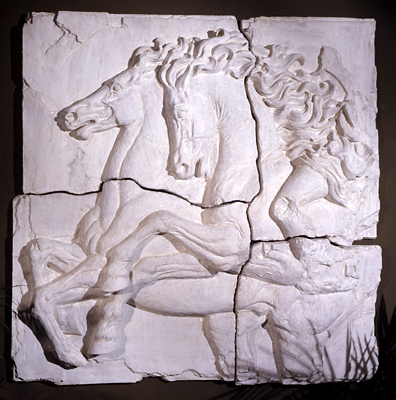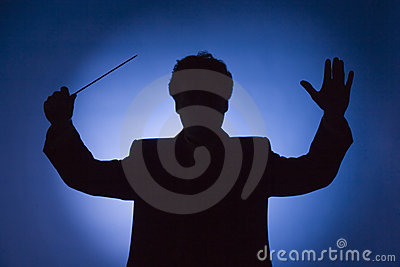The Conductor

12.9.11 TME
return to
Educated Equestrian
return to
Educated Equestrian

“Twinkle, twinkle little star, how I wonder what you are.
Up above the world so high, like a diamond in the sky.
Twinkle, twinkle little star, how I wonder what you are!”
Singing and riding seem instinctively natural to children. The four beat rhythm of the song matches the four beat gait of the horse. The soothing sway of the horse, paired with a little song, is a soothing comfort,young riders enjoy. For those who started riding early, finding and following the rhythm of the horse was effortless and non-cognitive. But the truth is, those of us who are “natural riders” are nearly as handicapped as those who learn to ride later in life, as adults. We find our bodies following the dance of the horse, without understanding the how and the why. Without understanding the how and why, it’s nearly impossible to make improvements in one’s own riding or explain and teach a beginner rider to adapt seamlessly to the motions of the horse. There needs to be a link between the body and the mind, an understanding of the mechanics and the art of the dance with the horse.
Up above the world so high, like a diamond in the sky.
Twinkle, twinkle little star, how I wonder what you are!”
Singing and riding seem instinctively natural to children. The four beat rhythm of the song matches the four beat gait of the horse. The soothing sway of the horse, paired with a little song, is a soothing comfort,young riders enjoy. For those who started riding early, finding and following the rhythm of the horse was effortless and non-cognitive. But the truth is, those of us who are “natural riders” are nearly as handicapped as those who learn to ride later in life, as adults. We find our bodies following the dance of the horse, without understanding the how and the why. Without understanding the how and why, it’s nearly impossible to make improvements in one’s own riding or explain and teach a beginner rider to adapt seamlessly to the motions of the horse. There needs to be a link between the body and the mind, an understanding of the mechanics and the art of the dance with the horse.
"What would you say about a student musician who would want to play a violin without in effect understanding the mechanism of the instrument and the first rules of music? This is what most of our riders in their vanity and pretension do with their horses when they ride. Everyone tries to train their horse each in their way and with their preconceived ideas which are most often wrong." Captain Raabe
Musicians have long understood there are rules of music and of instruments, just as there are laws to all of nature. These laws must be understood and obeyed, to produce a functional, aesthetically pleasing product. An understanding of the mathematical basis of music and the mechanics of the instrument they attempt to play allows the musician to consistently produce high quality work. The student musician who endeavors to learn the art realizes there is a need to define, describe and manage the flow of energy that is music. As the leader of a group of musicians, the conductor’s primary duties are to unify the performers, set the tempo, execute clear preparations and beats, and to listen critically and shape the sound of the ensemble. The student rider may find the language of music useful in shaping and conducting the rhythm and tempo of the horse:
Accelerando: Increase of tempo in music
Adagio: Slow, leisurely
Allegretto: Moderately fast, lively; faster than andante, slower than allegro
Allegro: Lively, brisk, rapid
Andante: Moderately slow, a walking speed
Diminuendo: Gradually growing softer, decrescendo
Dolce: Sweetly, softly
Espressione: Expressively
Grave: Heavy, slow, pondereous in movement. Pronounced “Grov Ay”
Legato: Smooth, flowing
Largo: Large, broad, slow and stately
Legato: Smooth and connected
Lento: Slow
L’istesso tempo: The same tempo (The tempo remains as before, after a change was
made)
Maestoso: Majestic, dignified
Meno: Less
Molto, molta: Much
Ostinato: A repeated melodic or rhythmic fragment
Piano: Soft, softly
Pianissimo: Very soft
Presto: Fast, rapid
Ritardando: Gradually growing slower
Rubato: From the Italian "robbed". Used to indicate a modification of the
strict rhythmical flow.
Scale: A graduated series of tones arranged in a specified order
Scherzo: Joke, jest. A sprightly movement, light and humorous in nature
Sforzando: Explosively (sfz)
Sostenuto: Sustained
Spirito: Spiritedly
Staccato: Separate. Sounded in a short, detached manner
Tempo: The rate of speed at which a musical composition is performed
Tutti: All, whole, everyone
Vivace: Spirited, bright, rapid, equaling or exceeding allegro
As the conductor of the horse, the rider must unify the horse, set the tempo, execute clear preparations and beats, listen critically and shape the ensemble. The rider attends to harmony (the result of simultaneous sounding of two or more tones consonant with each other) and dissonance (a simultaneous sounding of tones that produces a feeling of tension or unrest and a feeling that further resolution is needed). The significant difference between music and equitation is that the “instrument”, the horse, is a living, breathing being, with emotions and a mind of its own. The laws of physics and the science of psychology are equally important in the ensemble that is the art of equitation, and the educated equestrian understands the pursuit of study in each of these areas is equally important. Add to this ensemble love and compassion, and beautiful music can be made.
Accelerando: Increase of tempo in music
Adagio: Slow, leisurely
Allegretto: Moderately fast, lively; faster than andante, slower than allegro
Allegro: Lively, brisk, rapid
Andante: Moderately slow, a walking speed
Diminuendo: Gradually growing softer, decrescendo
Dolce: Sweetly, softly
Espressione: Expressively
Grave: Heavy, slow, pondereous in movement. Pronounced “Grov Ay”
Legato: Smooth, flowing
Largo: Large, broad, slow and stately
Legato: Smooth and connected
Lento: Slow
L’istesso tempo: The same tempo (The tempo remains as before, after a change was
made)
Maestoso: Majestic, dignified
Meno: Less
Molto, molta: Much
Ostinato: A repeated melodic or rhythmic fragment
Piano: Soft, softly
Pianissimo: Very soft
Presto: Fast, rapid
Ritardando: Gradually growing slower
Rubato: From the Italian "robbed". Used to indicate a modification of the
strict rhythmical flow.
Scale: A graduated series of tones arranged in a specified order
Scherzo: Joke, jest. A sprightly movement, light and humorous in nature
Sforzando: Explosively (sfz)
Sostenuto: Sustained
Spirito: Spiritedly
Staccato: Separate. Sounded in a short, detached manner
Tempo: The rate of speed at which a musical composition is performed
Tutti: All, whole, everyone
Vivace: Spirited, bright, rapid, equaling or exceeding allegro
As the conductor of the horse, the rider must unify the horse, set the tempo, execute clear preparations and beats, listen critically and shape the ensemble. The rider attends to harmony (the result of simultaneous sounding of two or more tones consonant with each other) and dissonance (a simultaneous sounding of tones that produces a feeling of tension or unrest and a feeling that further resolution is needed). The significant difference between music and equitation is that the “instrument”, the horse, is a living, breathing being, with emotions and a mind of its own. The laws of physics and the science of psychology are equally important in the ensemble that is the art of equitation, and the educated equestrian understands the pursuit of study in each of these areas is equally important. Add to this ensemble love and compassion, and beautiful music can be made.